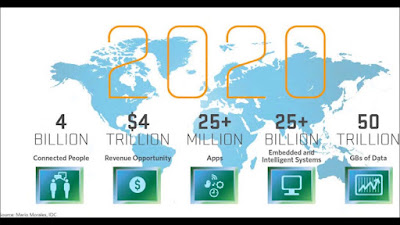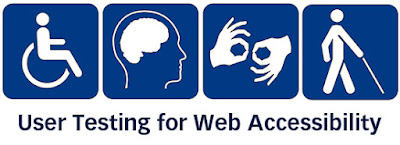The chairman of Wipro, Azim Premji expressed a positive outlook on the Indian IT industry prospects for the current fiscal despite the economic volatility globally. Looking ahead, the industry sees a volatile economic environment. However, the economic prospects for main countries of exports are getting a bit better. The global political uncertainties heavily weighed on the business sentiment that impacts the industry in Fiscal Year 2017. The optimism of Wipro for the current fiscal came out from the fact that marketplaces look to spend on technology since it is becoming a key differentiator. Today now more than ever, the importance of Information Technology could not be denied.
DRASTIC CHANGES IN EXPERIENCES AND EXPECTATIONS OF BUSINESSES AND CONSUMERS
Over the past year, there is further evidence of drastic change in the experiences and expectations of both consumers and business models. Careers in computer information technology continues to rise as more and more people are opting to delve into the digital world. The central element that drives the change is digital. According to Premji, the IT services firms are key in delivering digital to organizations. Furthermore, the stated that the success would depend on its ability of redefining and aligning itself with a new global paradigm as well as the disruptive developments in the industry. The firm ended fiscal year7 with a consolidated income of Rs 55,040, recording a 7.4 percent growth.

DIGITAL ECOSYSTEM GROWTH
The digital ecosystem rose from 17.5 percent of its revenues in the first quarter of FY17 to 22.1 percent during the fourth quarter. Moreover, he stressed that Wipro has performed considerable investments in both organic and inorganic fronts to transform business offerings to service the new customer requirements. The chairman put emphasis on the fact that the company goes beyond just making financial capital with value in other aspects, like environmental, social, human and intellectual. The social sphere activities of the company are not only limited to India, but in the overseas markets as well where it has its presence.
THE INDIAN IT INDUSTRY POISED TO WITNESS GROWTH
Despite the headwinds, such as delayed in decision making because of the uncertainties in macro-economic, visa issues, trade protectionism and slower traditional services growth, the information technology industry in India and business processing management industry is poised to witness a seven to eight percent growth during FY18. In general, NASSCOM releases the guidance numbers in February each year, but postponed it citing geopolitical factors. The industry added more than $11 billion revenue during 2016-2017, rising at 7.6 percent in reported currency terms. This was lower compared to the revised range pegged at 8 to 10 percent from 10-12 originally estimated growth. The outlook comes on the back of economic and political uncertainties, which affected discretionary and decision making spend in the past year. Furthermore, NASSCOM cited a boost in requirement for automated based projects and integrated digital capabilities from customers that were key investments for the industry. The growth during the year will be driven by adoption of new technologies and modernization of operations, like the cognitive and embedded analytics, cloud platforms, internet of things, embedded analytics and enterprise customers scale digital projects.
RE-SKILLING FOR EMERGING JOBS
It is imperative for new and existing talents to re-skill to prepare for emerging job roles that require new sets of skills. For the fiscal year 2017-18, it has been stated that the industry would hire 1.3 to 1.5 people on a net basis. It is also looking to establish a digital skills platform, together with its members to re-skill over a million people in the IT industry workforce in the next four to five years. At present, a lot of top companies have already more than 50 percent of their staff are trained in digital services.
The economic momentum of India suffered setback because of demonetization. The economy is expected to recover and growth would accelerate gradually to 7.7 percent by 2019-2020. The World Bank said that the demonetization caused immediate cash crunch and thus the cash reliant sectors activity was affected. Inflation would stabilize, supportable by favorable structural and weather reforms. So far, normal monsoons have offset increases in the prices of petroleum. Exchange rate has appreciated, which partly reflects the expectations of a narrowing inflation gap between the US and India and limited external vulnerabilities as the present account deficit is expected to stay below 2 percent of GDP.
Challenges to the favorable growth outlook of India could stem from the global environment uncertainties, which include the growing global protectionism and a sharp decline in the economy of China that could delay a meaningful recovery of external demand further. There is a big uncertainty on the extent in which demonetization caused informal, small firms to exit and shed jobs.
The positive outlook of the IT industry of India will give rise to more IT professionals providing outsourcing services.
DRASTIC CHANGES IN EXPERIENCES AND EXPECTATIONS OF BUSINESSES AND CONSUMERS
Over the past year, there is further evidence of drastic change in the experiences and expectations of both consumers and business models. Careers in computer information technology continues to rise as more and more people are opting to delve into the digital world. The central element that drives the change is digital. According to Premji, the IT services firms are key in delivering digital to organizations. Furthermore, the stated that the success would depend on its ability of redefining and aligning itself with a new global paradigm as well as the disruptive developments in the industry. The firm ended fiscal year7 with a consolidated income of Rs 55,040, recording a 7.4 percent growth.

DIGITAL ECOSYSTEM GROWTH
The digital ecosystem rose from 17.5 percent of its revenues in the first quarter of FY17 to 22.1 percent during the fourth quarter. Moreover, he stressed that Wipro has performed considerable investments in both organic and inorganic fronts to transform business offerings to service the new customer requirements. The chairman put emphasis on the fact that the company goes beyond just making financial capital with value in other aspects, like environmental, social, human and intellectual. The social sphere activities of the company are not only limited to India, but in the overseas markets as well where it has its presence.
THE INDIAN IT INDUSTRY POISED TO WITNESS GROWTH
Despite the headwinds, such as delayed in decision making because of the uncertainties in macro-economic, visa issues, trade protectionism and slower traditional services growth, the information technology industry in India and business processing management industry is poised to witness a seven to eight percent growth during FY18. In general, NASSCOM releases the guidance numbers in February each year, but postponed it citing geopolitical factors. The industry added more than $11 billion revenue during 2016-2017, rising at 7.6 percent in reported currency terms. This was lower compared to the revised range pegged at 8 to 10 percent from 10-12 originally estimated growth. The outlook comes on the back of economic and political uncertainties, which affected discretionary and decision making spend in the past year. Furthermore, NASSCOM cited a boost in requirement for automated based projects and integrated digital capabilities from customers that were key investments for the industry. The growth during the year will be driven by adoption of new technologies and modernization of operations, like the cognitive and embedded analytics, cloud platforms, internet of things, embedded analytics and enterprise customers scale digital projects.
RE-SKILLING FOR EMERGING JOBS
It is imperative for new and existing talents to re-skill to prepare for emerging job roles that require new sets of skills. For the fiscal year 2017-18, it has been stated that the industry would hire 1.3 to 1.5 people on a net basis. It is also looking to establish a digital skills platform, together with its members to re-skill over a million people in the IT industry workforce in the next four to five years. At present, a lot of top companies have already more than 50 percent of their staff are trained in digital services.
The economic momentum of India suffered setback because of demonetization. The economy is expected to recover and growth would accelerate gradually to 7.7 percent by 2019-2020. The World Bank said that the demonetization caused immediate cash crunch and thus the cash reliant sectors activity was affected. Inflation would stabilize, supportable by favorable structural and weather reforms. So far, normal monsoons have offset increases in the prices of petroleum. Exchange rate has appreciated, which partly reflects the expectations of a narrowing inflation gap between the US and India and limited external vulnerabilities as the present account deficit is expected to stay below 2 percent of GDP.
Challenges to the favorable growth outlook of India could stem from the global environment uncertainties, which include the growing global protectionism and a sharp decline in the economy of China that could delay a meaningful recovery of external demand further. There is a big uncertainty on the extent in which demonetization caused informal, small firms to exit and shed jobs.
The positive outlook of the IT industry of India will give rise to more IT professionals providing outsourcing services.


